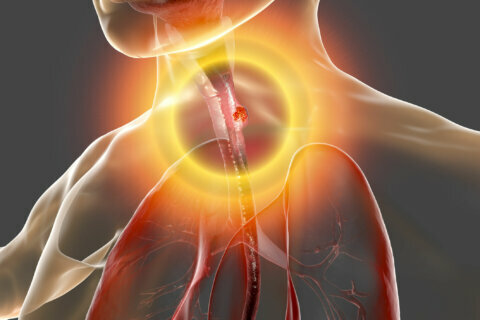WASHINGTON — New research could result in less open heart surgery and more people on statins.
Two studies presented at the recent American College of Cardiology Scientific Sessions in Chicago are likely to have a huge impact on the way modern medicine treats people with faulty heart valves, and those with the potential for heart trouble down the road.
One study looked at one of the latest and greatest innovations in cardiac care: the use of a minimally invasive procedure to replace a bad aortic heart valve.
This is the valve leading from the main pumping chamber of the heart, and when it begins to fail and close — a condition called aortic stenosis — it can become life threatening.
Traditionally, replacing this valve has meant open heart surgery. Though in recent years, cardiac surgeons have started to use a tiny balloon-expandable catheter inserted in an upper leg to put a new valve in place without removing the old one.
So far, this procedure has only been used on patients whose bodies can’t handle open heart surgery. But this new research indicates it’s time to increase its use.
“This study showed catheter-based aortic valve replacement — or TAVR — had outcomes that were equal to those of surgical aortic valve replacement, but in fact at lower risk, with less strokes and less death over a several year follow-up period,” says Dr. Warren Levy, cardiologist and chief medical officer of Virginia Heart.
He says this is a “very big deal” for cardiology, noting that if this kind of research data keeps coming in, TAVR will eventually replace open heart surgery as the standard for valve replacement.
And while the number of patients undergoing traditional valve surgery is declining, Levy predicts the pool of people on statins will become significantly larger.
That may be due in part to another new study presented in Chicago that found low dose statins are beneficial as a preventative measure for those with normal cholesterol and blood pressure, who nonetheless carry certain risk factors for heart disease such as smoking, family history and a fair amount of belly fat.
“They had a much reduced risk of heart attacks and death over the five to six years of follow-up compared to patients who were not treated at all,” Levy says.
He says both these results — the TAVR study, and the statin research — are going to change the standard of care in cardiology.
Cardiologists are also taking a close look at papers presented at the recent American College of Cardiology meeting that focused on women with heart disease.
One study found that mammograms, routinely administered to screen for breast cancer, can also be a valuable tool for detecting early signs of heart disease.
“They showed a link between calcium in arteries in the breast, which are easily visible on digital mammography, and the level of calcium buildup in the arteries around the heart,” Levy says.







